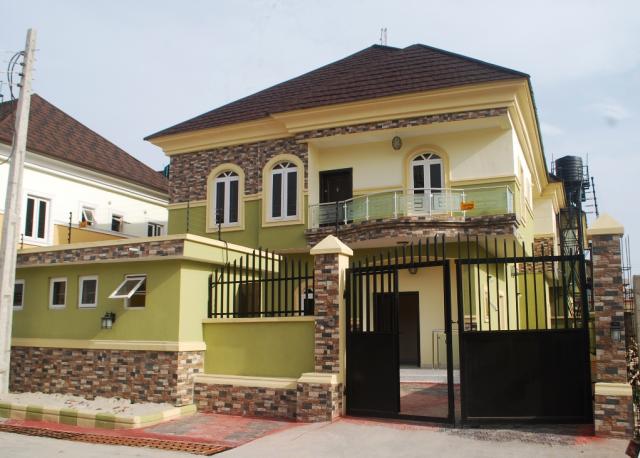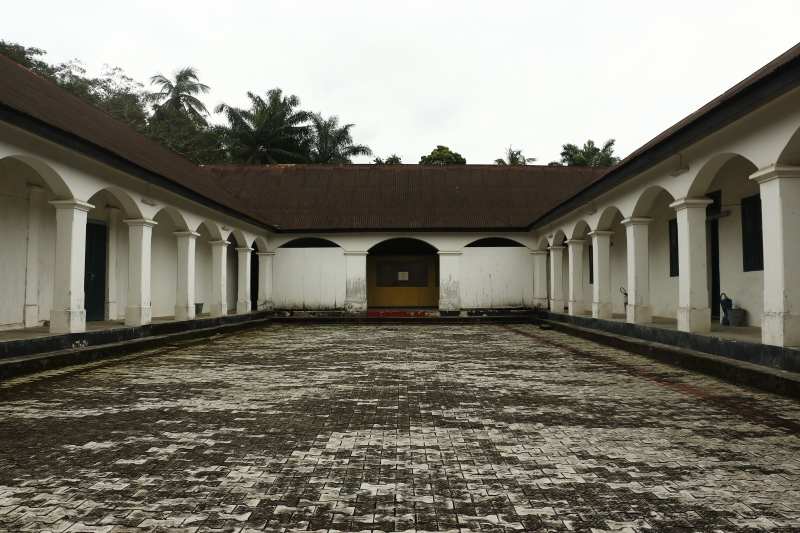I recently came across this article by Architect and Writer Laolu Rahman Ganiy on Medium. The piece speaks to the need to reintroduce the iconic courtyard back into Nigerian contemporary architecture, most especially residential architecture. The article echoes a lot of my personal sentiments with regard to how far indigenous architectural design of the home has fallen, when viewed on a broad scale. Function has been sacrificed for superficial and cosmetic form creating what the writer describes as, ” sick, stuffed and insufferably lit living spaces. Here’s the article.
WORDS BY LAOLU RAHMAN GANIY

Fortresses, strongholds and monoliths of blockwork and high-pitched roofs. That’s what comes to mind on taking stock of the outward and inherent designs of residential buildings across scales and densities and class systems. Our buildings all share a common story; tales of sick, stuffed and insufferably lit living spaces rife across our cities, towns and by extension, little communities. A seemingly-immortal phenomenon that sticks around even as intermittent architectural fads and trends come and go.
A heightened sense of territoriality in our living spaces has and still is playing a major role in how our buildings are designed, constructed and dwelt, holding up quality of life in these buildings. Prophylactic fences and burglar proofs, deficient fenestrations in these walled-in homes are some of the elements used in defining boundaries and assert a sort of security blanket, birthing an architecture based of onion philosophy on steroids.
What this means is that occupants of the average Nigerian home have become habituated -if not indifferent — to the effects of user-unfriendly design so much that the decisions of their architects are not questioned, instead the resultant poorly aired and lit spaces are not seen as a cause-effect construct of the lines of the architect but as socio-political issues. (Cue blaming the heat on lack of electricity but not insufficient window openings). While the socio-politics do exist — the unchecked surge of insecurity in the 80s, a succession of perfunctory governments, etc — and duly affect the way of life of the Nigerian, (See Koolhaas’s works on Lagos), The effecting inability of openings used in our buildings to meet basic needs of human comfort; ventilation, lighting, thermal neutrality etcetera and the refusal of architecture to tender solutions to these needs should be simply unacceptable.
– Not an anachronism, history has proof.
A well-designed courtyard, can be an integral organic building component to collect and redirect fresh air, water and save energy, as it has been for ages hitherto as well as a space of community, of social coming together and of therapeutic benefits.
Courtyard of the Nanna Living History Museum in Koko, Delta State, Nigeria
The indigenous tribes of the construct of present day Nigeria have long had their architecture synonymous with the courtyard space, as an assorted mix of shared functions, place of festivity, of education, receiving guests, relaxation and meetings, as courts of law in palaces, settlement of strife and receiving dignitaries, as water collecting impluvia, making craftwork, shrines amongst other functions.
The courtyard was more than an architectural space but requisite to the lifestyle of the people, so integral it was usually either the most influential or the most used space of the living space, and in some cases both, a correspondence of today’s living rooms (cue “parlour”, “sitting room”). In essence, the courtyard existed.
Read the full article here.






